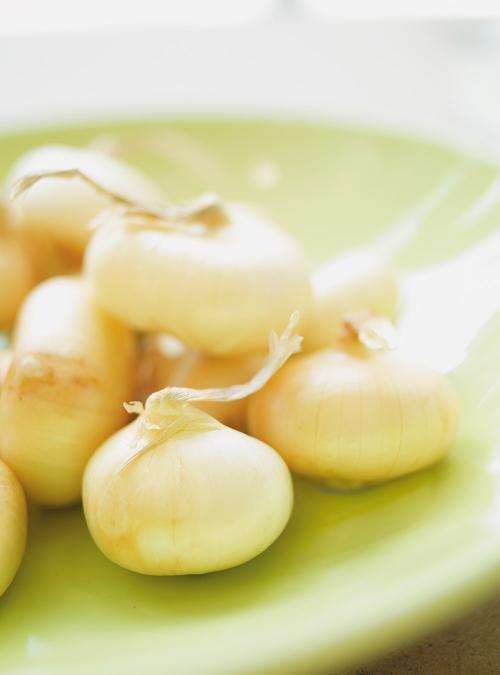Thomas Laxton, Mr. Big, Little Marvel, Early Perfection, Serge — they all sound like code names for spies. Turns out they’re names of a few common pea varieties.
Peas with their catchy and clever monikers are dietary staples the world over. Come spring, many of us clamor to get our hands on the first fresh snap and snow peas. But peas are equally popular dried. Virtually every culture incorporates dried yellow or green peas into their diet. Think pease porridge in England, dal in India, split pea and ham soup in Quebec, or roasted and salted peas in southeast Asia, to name a few popular pea dishes.

Why Older Adults Should Give Peas a Chance
People have eaten peas since the agricultural revolution of the Stone Age for good reason. They’re versatile and healthy, and a perfect addition to an older adult’s diet.
1. Peas are good for the digestive system.
Peas pack a lot of fiber to keep things moving — more than 10% of our daily needs per 100 gram serving (the equivalent of 3.5 ounces, or a little less than 1/2 a cup).
Peas are good for digestive systems for another reason, though. They’re part of a larger family of grain seeds called pulses or legumes, and legumes contain a powerful antioxidant called coumestrol. Scientists have found that coumestrol in legumes, including peas, can halve the risk of gastric cancer related to nitrate and nitrite intake.
2. Peas are recommended in diabetic diets.
According to the Diabetes Council, despite the carbs in green peas, they’re a healthy choice for diabetics. One cup of peas has 118 calories and 21 grams of carbs, but also 8 grams of protein and 7 grams of fiber. And they’re an excellent source of vitamin C. They have a low glycemic index (22); but more importantly, a very low glycemic load of 3 (meaning the sugars are released slowly).
Peas don’t cause a blood sugar spike because they contain lots of fiber and protein for your body to digest, and the calories in peas come from a complex carbohydrate, which requires breaking down. Researchers in Spain also recently discovered that eating three servings of legumes a week, including peas, significantly lowered the risk of developing type 2 diabetes.
3. Peas are natural anti-inflammatories.
Credit goes in part to antioxidants called pisumsaponins and pisomosides that are found almost exclusively in peas.
4. Peas keep us looking and feeling younger.
Peas are a good source of copper, a mineral that plays a critical role in the development of collagen. Collagen is a protein that skin needs to maintain elasticity and prevent sagging and wrinkles. Copper also helps our bodies absorb iron.
5. Peas are an excellent source of potassium.
One cup of boiled, unsalted fresh split peas contains more than 710 milligrams of potassium, about 20% of the recommended daily intake for adults. The American Heart Association has written extensively about the health benefits of potassium, noting that foods like avocados and peas that are rich in potassium are important for managing high blood pressure and hypertension.
6. Peas are high in folate, a B vitamin.
Folate is a water-soluble B vitamin that’s naturally found in a variety of foods, especially dark green leafy vegetables. The Office of Dietary Supplements at the National Institutes of Health recommends adults aim to intake 400 micrograms (mcg) of folate every day. One cup of boiled, unsalted fresh split peas contains 127 mcg of folate, 32% of our recommended daily intake.
3 Tasty Pea Recipes to Try
Fresh green peas are the immature versions of dried varieties. Despite their versatility and vibrant color, fresh peas are often relegated to an accompaniment to proteins and carbs on dinner plates. Fresh green peas deserve more than side dish status, however. With help from a bit of mint and lemon zest, they make a brilliant risotto.
Fresh green peas are stars in chilled soups, frittatas, or in scafata topped with a poached egg. If you can’t get fresh peas, nutrient-dense frozen green peas will do the trick in many recipes.
Dried peas are a pantry staple because they’re relatively inexpensive to purchase in large quantities, and they store well for extended periods. Dried peas make hearty dal, an Indian stew with the robust flavors of cumin, coriander and chilli. Dried yellow peas team up nicely with ham to make filling soup, too. Though not traditional, split peas can be used in spreads and dips, such as hummus. They also make a hefty salad when combined with rice, nuts and dried cranberries, and served atop a bed of lettuce. Here are three tasty pea recipes to try:
1. Poached Eggs Over Scafata from Bon Appétit

Bon Appétit
2. Everyday Yellow Dal from Epicurious

Epicurious
3. Old-Fashioned Pea Soup from Ricardo Cuisine

Ricardo Cuisine



